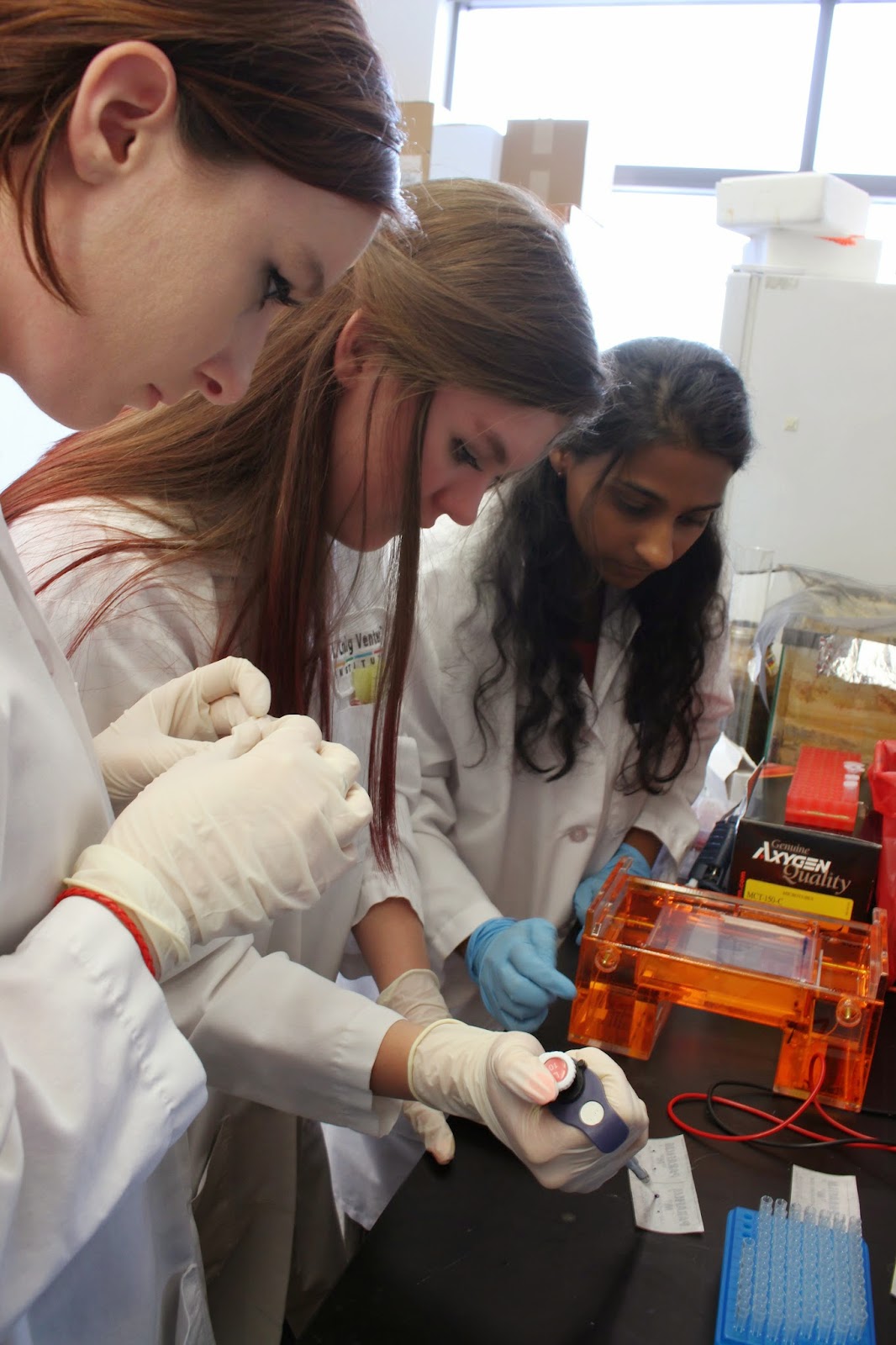Animal Forensics and Molecular Biology Techniques

A one-day high school workshop for New Hampton School’s Project Week
Hosted by the J. Craig Venter Institute, Rockville, Maryland – March 11, 2015
Every March, the New Hampton School, an independent high school in New Hampshire, holds Project Week, an experiential learning program that allows students to choose from a wide array of unique activities, both on and off campus. This year, one project group traveled to Washington D.C. to complete a program on forensic biology, which included activities at both the Crime Museum and the J. Craig Venter Institute (JCVI).
On Wednesday, March 11, 2015, ten high school students and two teachers visited JCVI to learn about molecular biology techniques and animal forensics. Their activities were coordinated by Dr. Karla Stucker, a Postdoctoral Fellow in the Virology Group at JCVI, and included a review of DNA structure and replication, a tour of the Institute, lessons about PCR and gel electrophoresis techniques, hands-on laboratory exercises, and a discussion about animal forensics with case examples. Dr. Suchismita Chandran, a Postdoctoral Fellow in the Synthetic Biology Group at JCVI, assisted with the laboratory exercises.

Upon arrival, each participant “adopted” a dog for the day by picking from various photos of different pure-bred and mixed breed dogs. They thus became dog owners living in an upscale apartment complex in Bethesda, where they were required to submit cheek swab samples from their pets to be entered into a DNA database. Our gel electrophoresis experiment was designed to reveal which dog owner(s) failed to pick up after their pet(s) by checking for a match between cheek swab samples and a stool sample. The test made use of size differences in PCR amplicons from a hypothetical microsatellite marker that helps distinguish dog breeds. We also discussed more serious animal forensic cases, including those involving wildlife trafficking and the recent case of a poisoned show dog at Crufts, a large dog show in the UK.
Each day, the students blog about their experiences. One student, Amy, wrote, “We saw many young and passionate researchers working hard in their labs, which made us feel excited and got us looking forward to being scientists. The lab room was clean, organized and bright. We were not allowed to touch anything without gloves due to personal protection. After visiting, we have a better understanding of how scientists' workplaces should look like, and their rigorous attitudes towards science."